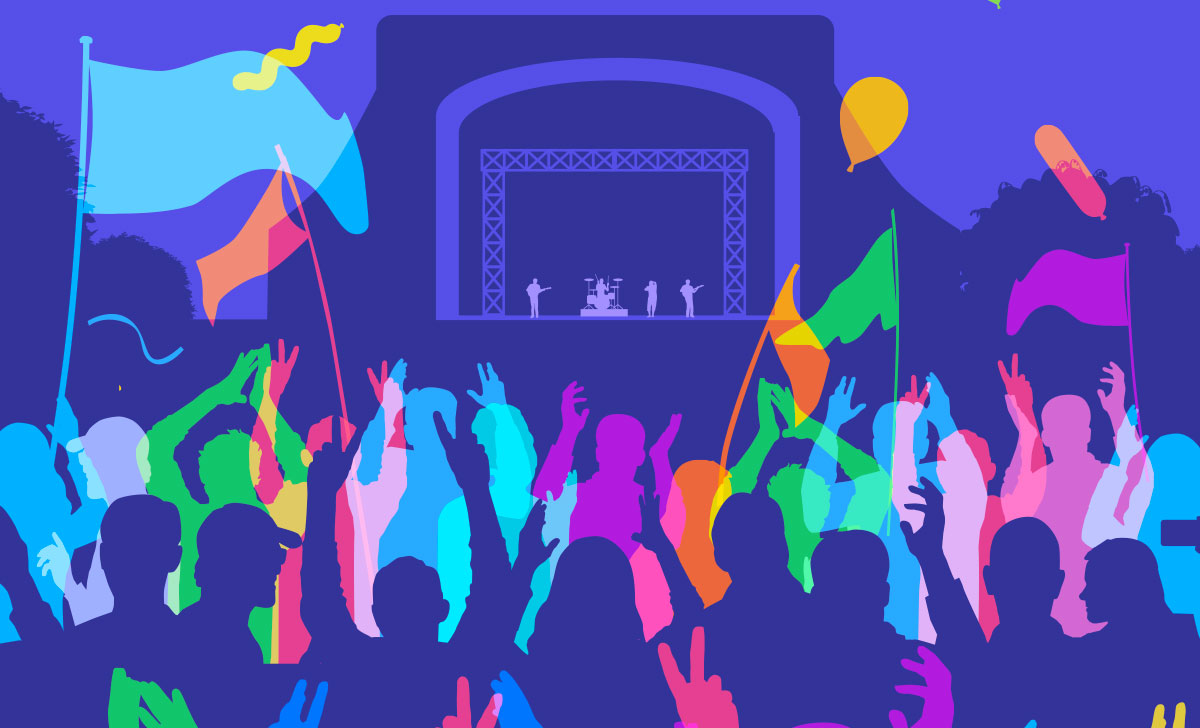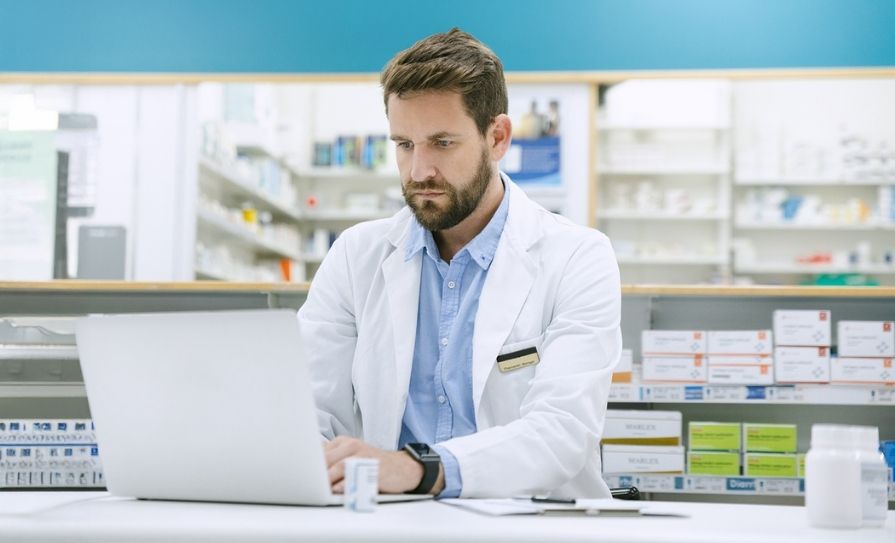Dr Des Corrigan Looks At The Drugs That Will Be On Party-Goers’ Wish-Lists This Summer And European Consumption Trends
Music festivals mean different things to different people. For many, if not most Irish people, they mean craic and are seen as an almost obligatory rite of passage.
My perspective has always been different. Since the 1970s, music festivals meant drugs and drug-taking to me. This is because at that time, some of my academic colleagues and I, along with a number of pharmacy graduates, provided an analytical service to the Drug Squad of An Garda Síochána and we could be certain that the days immediately after a music festival would always see a heavier than normal workload of samples brought to us for analysis.
My concern about the linkage between festivals and drugs was reinforced upon reading a paper in the September 2021 issue of the Irish Journal of Medical Sciences describing the results of an anonymous online survey completed by 1,193 Irish festival-goers over the age of 18, 96 per cent of whom reported the use of a range of drugs at festivals at home and abroad during 2019.
The drugs reportedly used included, in order of popularity, alcohol, cannabis, mushrooms, 2-C-B, DMT, ecstasy, cocaine, speed, GHB, new psychoactive substances, nitrous oxide, ketamine, LSD, mephedrone, and benzos.
I have written about some of these in recent articles, including information on mushrooms and LSD in the March issue and on DMT in January, so I will avoid any repetition.
In September 2020, I dealt with GHB and some of you may have seen the BBC series Four Lives starring Stephen Merchant as the convicted serial killer Stephen Port, who used GHB as a ‘date rape’ drug.
You may also recall the spate of ‘drugspiking’ reports in the Irish and British media recently. Whilst none of the reports identified a particular drug, I would be very surprised if the substance in question was not GHB.
The UK recently reclassified GHB along with GBL and 1,4-BD (pro-drugs convertible in the body to GHB) following a recommendation from its Advisory Committee on the Misuse of Drugs.
Their November 2020 report referred to a steep rise in GHB-related deaths in recent years, noting that such fatalities were likely to be underestimated due to its rapid elimination, and also the post mortem endogenous production of GHB that makes forensic detection difficult.
In addition to the severe risk of overdose, the report commented on life-threatening withdrawal symptoms linked to physical dependence and mental health issues arising after GHB-induced coma.
I wrote about nitrous oxide in July 2020, but a paper from Dutch researchers in Addiction (September 2021) noted that abuse of the gas seems to have increased, due partly to a shortage of cocaine and heroin and partly due to decreased use of party drugs such as ecstasy because of a lack of social opportunities for using it during lockdowns.
This, they believe, has led to increased use of more accessible and cheaper substances, such as nitrous oxide and cannabis.
The Dutch researchers reiterate the main health concern over ‘recreational’ use of the gas as being the impact on vitamin B12 levels and the resulting nerve damage, in particular in the spine, leading to paralysis. They also drew attention to the reported deaths from the US, Netherlands, South Africa and the UK.
Evidence of dependent patterns of use is emerging in the Netherlands, with users using more than one 8g cartridge (‘Whippit’, ‘Silver Bullet’, ‘Balloon’) on any one inhalation episode or shifting from cartridges to 2kg tanks. Conversations with community drug workers in parts of Dublin suggest that a similar dose escalation is occurring here. A worrying trend in the Netherlands is an increase in nitrous oxide-related traffic accidents, from 130 in 2017 to 960 by mid-2019.
Some of these were obviously due to intoxication, but others were due to the driver being distracted by trying to fill balloons with gas while driving!
Some of the other drugs on the festivalgoers’ list are less well-known. 2-C-B is one of the infamous ‘PIHKAL’ psychedelic molecules synthesised by Alexander Shulgin in 1974 that has been sold as ecstasy for use as a hallucinogenic club drug. It is a phenethylamine derivative with effects similar to LSD and MDMA.
It increases heart rate, can cause paranoia and like MDMA, there is a risk of death from hyperthermia.
There has been a large increase in the MDMA content of the various tablets on the black market
Because of its use as a human and veterinary anaesthetic, ketamine is better known. As a recreational drug, it is known as ‘K’ ‘Vitamin K’, ‘Special K’, or as ‘CK’ (for Calvin Klein) when mixed with cocaine. Human medical use is now considered less desirable because of side-effects such as euphoria, hallucinations and a ‘near death’ or out-of-body experience but ironically, it is chiefly the latter that attracts drug users to what they term ‘going through the K-hole’.
Other effects include psychotic reactions, palpitations, high BP and worryingly, significant bladder damage after frequent use. Deaths involve combinations of ketamine with alcohol, opioids or benzos. Gardaí reported 240 seizures of ketamine in 2019 compared to only 48 in 2018. This indicates an increasing issue with this drug, as do the results of the Drug Use in Higher Education in Ireland (DUHEI) Survey 2021 that reported 16 per cent of students having used the drug, rising to 46.7 per cent of those described as ‘current users’.
Mephedrone is 4-methyl-cathinone and as such, is one of the notorious ‘bath salts’, the sale and use of which were widespread during the heyday of the now-defunct ‘headshops’. Known also as m-cat, ‘meow-meow’, ‘snow blow’ or ‘bubbles’, it is both a stimulant and empathogen (‘hug drug’) like MDMA. As such, there is the risk of death from hyperthermia and over 100 deaths have been linked to its use in Europe, including four in Ireland.
Additional problems include palpitations, jaw-clenching and tooth-grinding, anxiety, and paranoia. It also causes severe vasoconstriction, which is a particular hazard when users move from oral to injecting routes of administration.
According to a comparative review of mephedrone and MDMA published in Brain Research in 2020, evidence that mephedrone is neurotoxic is inconclusive, whereas MDMA is deemed neurotoxic after regular use. The abuse liability of mephedrone is higher and there is evidence of compulsive re-dosing due to its more rapid onset and shorter duration of action.
MDMA is of course the now classical dance/ party drug. There has been a large increase in the MDMA content of the various tablets on the black market. Whereas the usually accepted dose for activity is 60-to-70mg, the average content in 2019 was measured at 118-to-210mg and some ‘super pills’ contained up to 340mg of drug. This increased potency seriously increases the risks associated with MDMA.
It still causes deaths from either heatstroke or water poisoning when large volumes of water are drunk to cope with or prevent the hyperthermia. There were 14 deaths reported in Ireland in 2017, up 75 per cent on the previous year.
The main concern for users seems to be the anxiety and depression that can occur, along with effects on verbal and working memory.
A paper in Neurotoxicity Research (September 2021) points out that alcohol adds to the hyperthermia, hyponatraemia and dehydration caused by MDMA when used in dance environments and states bluntly that “recreational and clinical MDMA users should refrain from concomitant drinking of alcoholic beverages to reduce the risk of adverse health incidents when using MDMA”.
Given that alcohol tops the list of drugs used by Irish festival goers, this advice, while badly needed, seems likely to fall on deaf ears.
CONTRIBUTOR INFORMATION
Dr Des Corrigan, Best Contribution in Pharmacy Award (winner), GSK Medical Media Awards 2014, is a former Director of the School of Pharmacy at TCD and won the Lifetime Achievement Award at the 2009 Pharmacist Awards.
He was chair of the Government’s National Advisory Committee on Drugs from 2000 to 2011. He currently chairs the Advisory Subcommittee on Herbal Medicines and is a member of the Advisory Committee on Human Medicines at the IMB.
He is a National Expert on Committee 13B (Phytochemistry) at the European Pharmacopoeia in Strasbourg and he is an editorial board member of the Journal of Herbal Medicine and of FACT — Focus on Alternative and Complementary Therapy.







